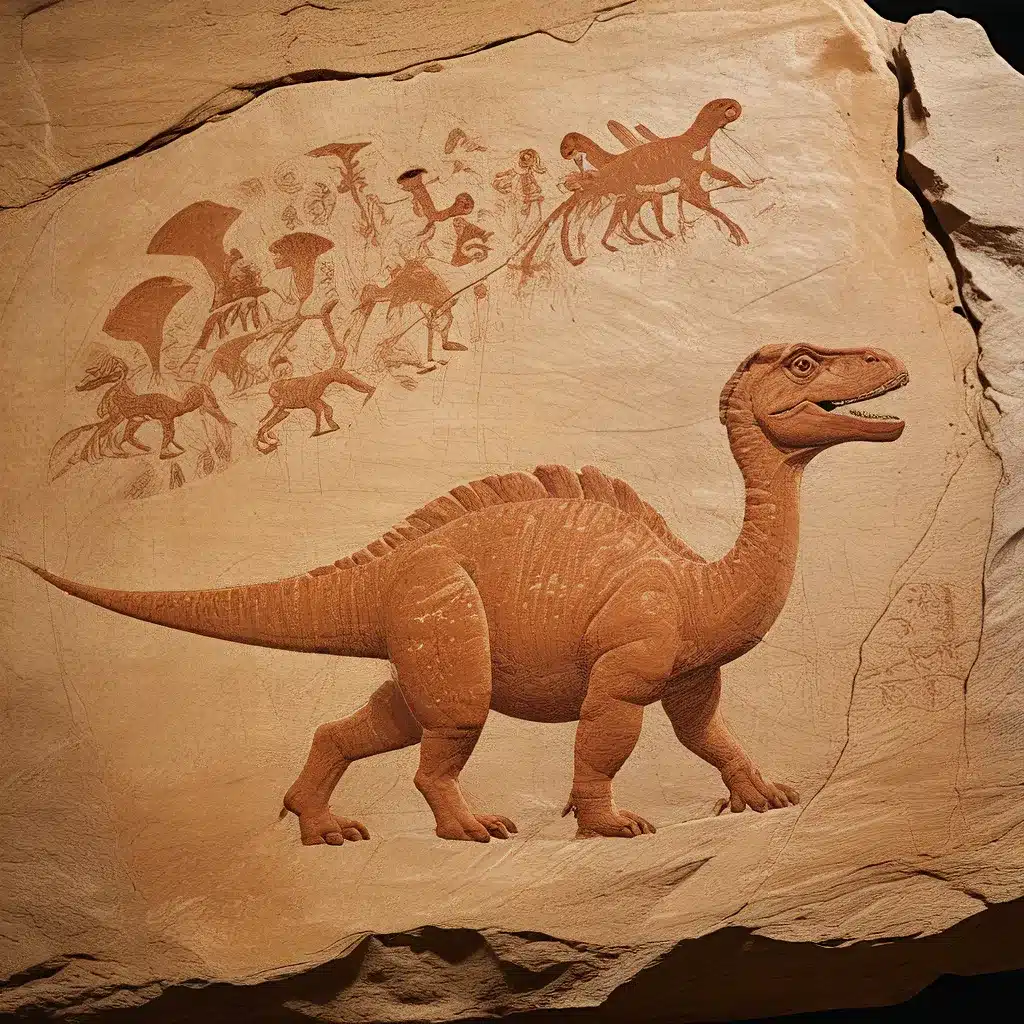
The world of paleontology has long been a realm of fascination, unveiling the mysteries of prehistoric life and the evolution of our planet. But recent discoveries have shed light on an intriguing intersection between the ancient world of dinosaurs and the artistic expressions of our human ancestors. In the remote regions of northeastern Brazil, a remarkable site has been uncovered that showcases a remarkable juxtaposition of paleontological and archaeological elements, providing a unique window into the cultural significance of dinosaurs in the distant past.
Serrote do Letreiro: A Remarkable Geological and Cultural Treasure
The Serrote do Letreiro Site, located in the Sousa municipality of Paraíba state in Brazil, is a true wonder of the ancient world. Spanning over 160,000 square feet, this site is characterized by an outstanding combination of fossilized dinosaur footprints and ancient rock art, or petroglyphs, created by the Indigenous peoples who once inhabited the region.
According to the research team led by archaeologist Leonardo Troiano, this site is unlike any other known archaeological or paleontological site in the world, bringing together these two crucial elements of our understanding of the past.
The dinosaur footprints found at Serrote do Letreiro date back to the Lower Cretaceous period, approximately 140 million years ago. These fossilized tracks were left by a diverse array of dinosaurs, including ornithopods, theropods, and sauropods – some of the most iconic and successful dinosaur lineages that have captivated the public’s imagination for centuries.
Alongside these remarkable paleontological remains, the site is also home to a significant collection of petroglyphs, or ancient rock carvings, created by the Indigenous inhabitants of the region. These petroglyphs, which feature a variety of geometric shapes, symbols, and motifs, are believed to have been produced between 3,000 and 9,000 years ago.
Bridging the Gap: Dinosaurs and Ancient Cultures
The discovery of these petroglyphs alongside the fossilized dinosaur footprints has led researchers to believe that the ancient inhabitants of the Serrote do Letreiro region had a deep fascination and cultural connection with the prehistoric creatures that once roamed the land.
Troiano and his team suggest that the creation of the petroglyphs was likely embedded in a “ritualistic context,” perhaps even involving the consumption of hallucinogens. This hypothesis is based on the observation that the petroglyphs bear a striking resemblance to the “initial visions” generated by the human brain when exposed to psychoactive substances.
Furthermore, the researchers note that the petroglyphs were deliberately placed in close proximity to the dinosaur footprints, indicating that the ancient artisans were aware of and acknowledged the presence of these prehistoric fossils. Interestingly, the petroglyphs appear to have been created in a way that avoided damaging the existing footprints, suggesting a reverence or respect for these natural wonders.
Changing Perspectives on Indigenous Contributions to Science
The discovery at Serrote do Letreiro has the potential to challenge long-held perceptions about the capabilities and scientific curiosity of ancient Indigenous cultures. Troiano notes that “traditionally, science has ignored and belittled Native American history and denied that natives and indigenous peoples could make significant contributions because their simple or primitive minds, according to scholars in the past, would not be capable of admiring or having scientific curiosity about fossils.”
However, the evidence from Serrote do Letreiro suggests that these ancient cultures were not only aware of the existence of dinosaur fossils but also found them to be of significant cultural importance. The petroglyphs, which likely represented some form of symbolic or ritualistic engagement with the prehistoric creatures, demonstrate that these ancient peoples had a profound appreciation for the natural world and its ancient wonders.
Preserving the Past for the Future
The Serrote do Letreiro site is a fragile and vulnerable treasure, facing threats from natural forces and human interference. The researchers emphasize the urgent need to implement measures to protect and preserve this remarkable geological and cultural heritage.
Proposals include the installation of handrails to guide visitors and a structure to redirect rainwater and prevent debris from damaging the site’s surfaces. These efforts would help ensure that the fossils and petroglyphs can be appreciated and studied by future generations, shedding light on the rich cultural and scientific legacy of the region.
Unlocking the Secrets of Prehistoric Artistry
As the research at Serrote do Letreiro continues, the world of paleontology and archaeology is poised to gain invaluable insights into the intertwined histories of dinosaurs and ancient cultures. This remarkable site serves as a testament to the enduring fascination and reverence that our human ancestors held for the prehistoric creatures that once roamed the Earth.
By preserving and studying these remarkable discoveries, we have the opportunity to rewrite the narrative of our shared past, uncovering the deep cultural significance of fossils and the profound connections that ancient peoples forged with the natural world. The Serrote do Letreiro site stands as a shining example of the power of interdisciplinary collaboration, bridging the gap between the sciences and the humanities to illuminate the rich tapestry of our global heritage.
The Lost Kingdoms is committed to exploring the enduring mysteries of the ancient world, from the heights of ancient civilizations to the depths of prehistoric life. Stay tuned for more captivating stories that challenge our understanding of the past and inspire us to uncover the hidden wonders that lie within.


